Cognition
Fall 2022 Semester
The Cognitive Psychology course provides an overview of some of the most important research in educational psychology over the past 25 years. We explore a subset of cognitive psychology research: the body of research exploring
A note about lightboxed images. On this and other pages at the website you'll see images that appear small. Click on the image and then the image will pop up (or "lightbox"). You'll now see the image at a bigger size. Try it out.
Classroom

Our classroom is Gleeson 213 (or GL213). This room is not in the School of Education. Instead you'll need to wander over to the main campus and find the library: always a good move for beginning doctoral students.
Within the library we are in room 213. This is the officially designated
A side benefit of having our classroom in Gleeson Library is that we are right next to the main campus cafeteria. In case you don't know this ... the main campus cafeteria is open on Saturdays and is much superior in terms of options and quality of food offered to what is offered in the SOE building.
What Do We Learn?
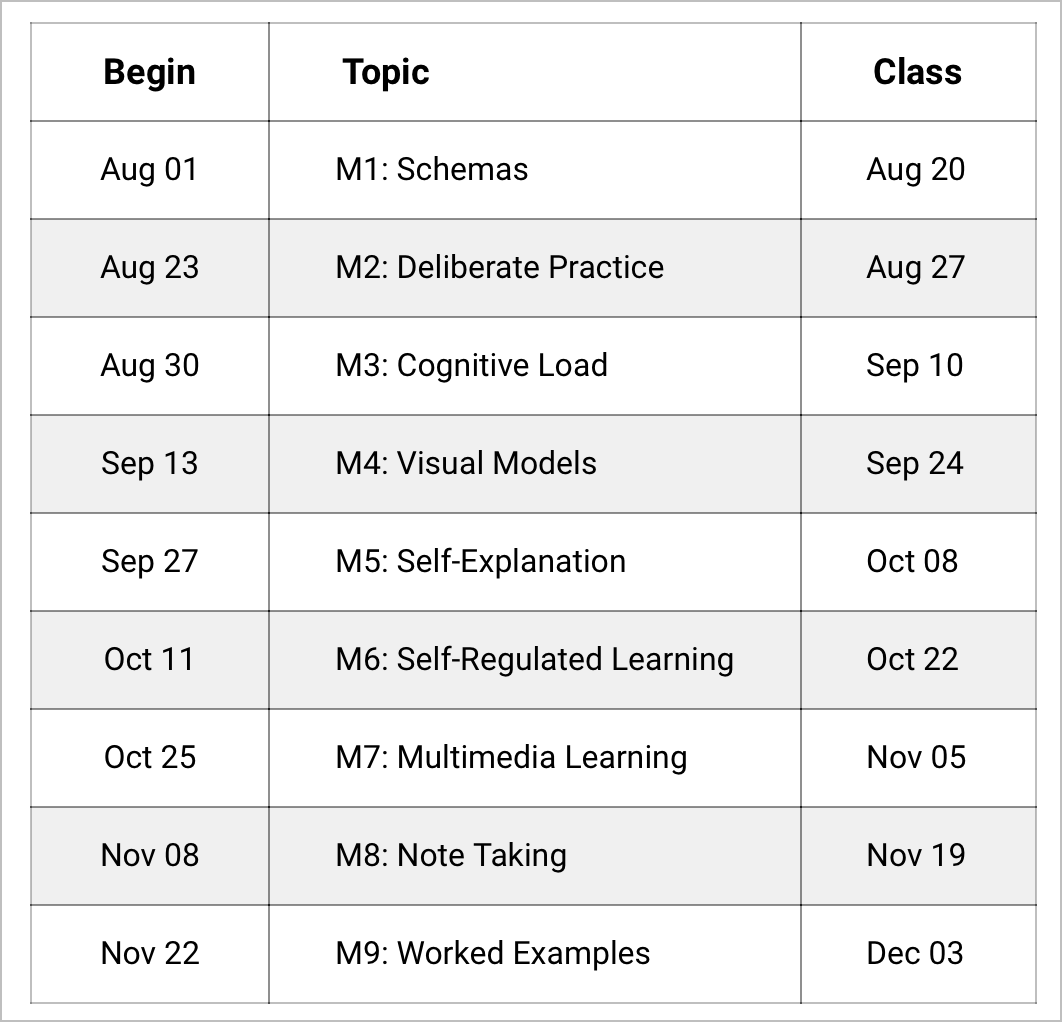
You will learn about the research into a group of powerful learning strategies. You will have the opportunity to dive deeper into one of these strategies or into a limited number of alternatives.
The learning modules and the dates when we meet as a class on Saturday afternoons are given to the side. Click on the image to see a larger, more readable, format of the table. For most modules you have 2 weeks to prepare before we meet as a live class. You will use a range of learning materials in preparation including: research readings, book chapters, audio jukeboxes, and videos.
Dive into the Research
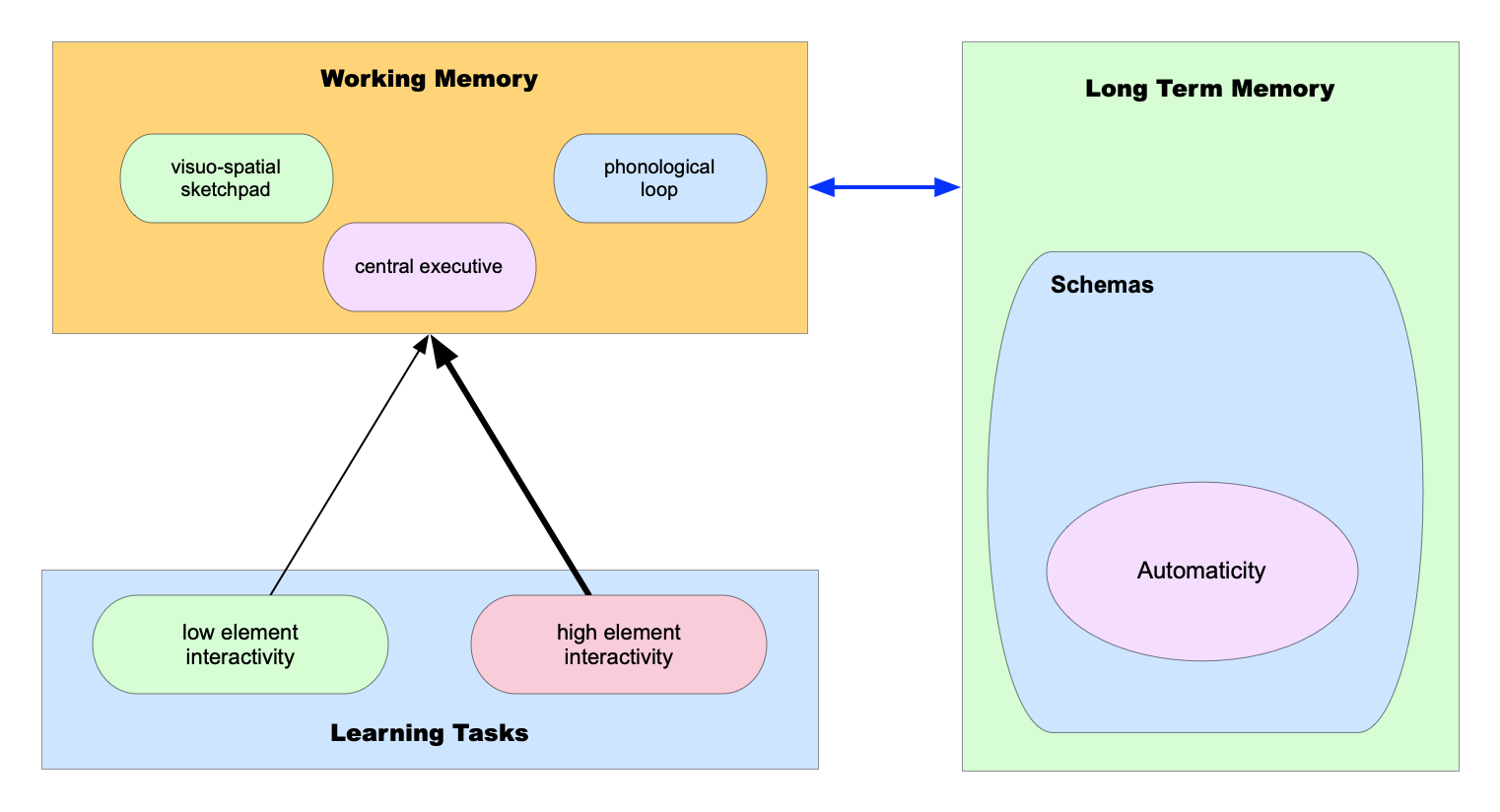
In this course you'll dive into the shallow end of the research pool. You'll learn how to nimbly use research databases (PsycInfo and ERIC). You'll read original research articles where you'll see how savvy educational researchers construct studies and communicate their findings. The statistics bits in the articles will be challenging but you'll receive support for making sense of those numbers as well.
Theory into Practice
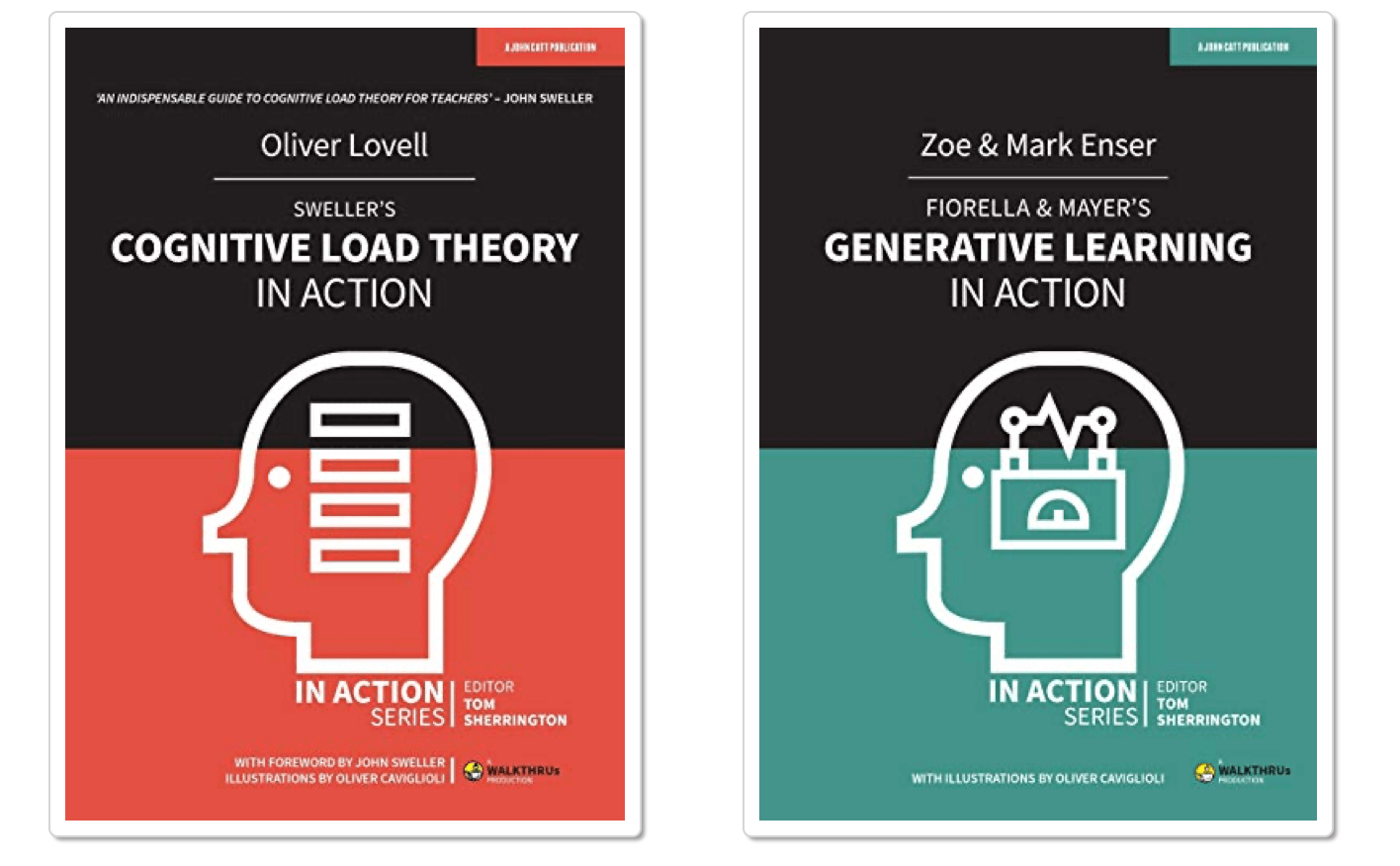
Researchers are typically not good at communicating how their research findings could be translated into everyday educational practice. To meet the need of the practioner in all of you we'll use a couple of books that build the bridge between theory and practice. Both books are relatively short but provide examples and strategies for implementing some key research-based teaching strategies. The books we'll use are:
The books in both "regular" and Kindle book formats. Purchase these books as soon as possible. The links above go to Amazon. Total cost of the two books is $28, though somewhat cheaper if you get the Kindle/ebook versions.
Intuitive Statistics
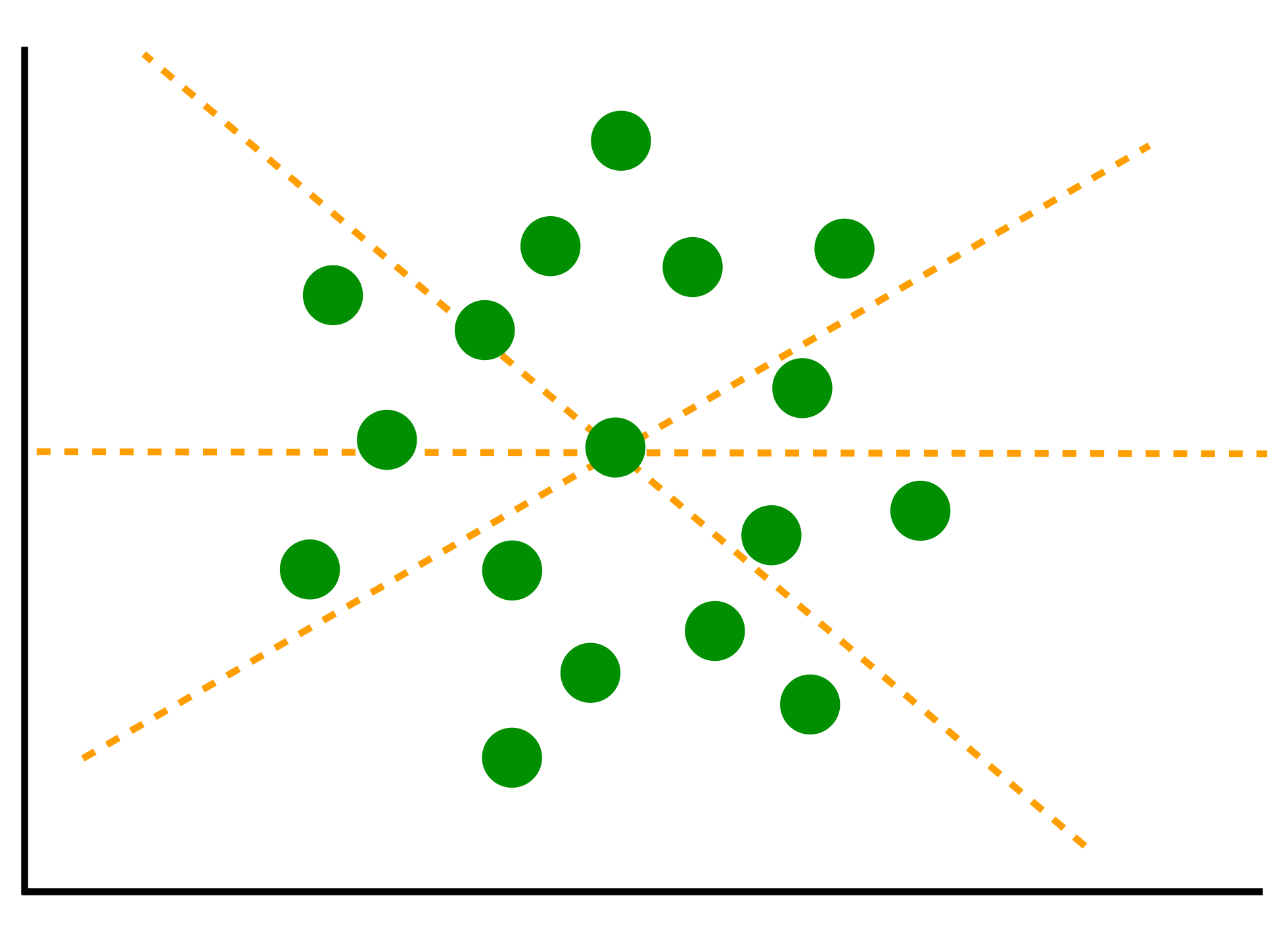
Where first-year students get stuck the most is trying to read and digest original research articles. The main barrier for them are the statistics bits in articles. This course will not cover statistical concepts in depth: that will come later in your program. But I will provide five introductory presentations about key statistical and research concepts. Each of these presentations will focus on statistical concepts rather than statistical formulas. Each presentation will be 20 minutes or less. The concepts covered will be:
- Variation
- Effect Size
- Correlation
- Research Designs
- Statistical Tests
Software Tools
You will be using a variety of software tools in this course. But the two that will impact you for the full semester are a great mind mapping software app called iThoughts (available for both Mac and Windows) and a wonderful note taking app called UpNote. iThoughts costs $25 for educators, UpNote is $25 for anyone. Total cost: $50
I'll discuss each app in more detail during our first meeting on August 20. However, below I provide a short overview of each product.
iThoughts
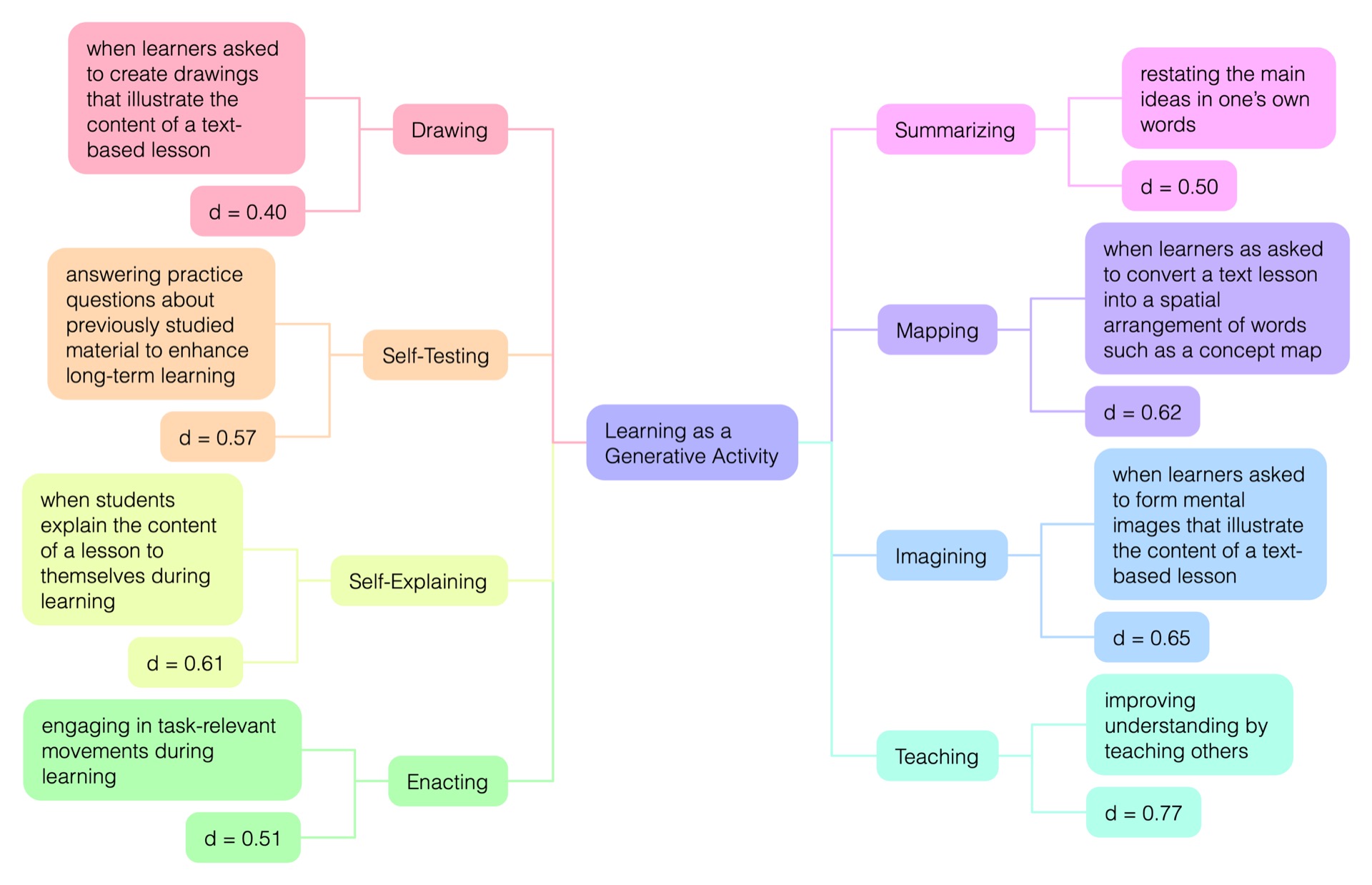
$25 for students. Works on Macs and Windows. You can additionally purchase for iPhone and iPad. You'll be using this software in our first live session on August 20. You can download a free trial. The free trial lasts 10 or 14 days (not sure which). The discounts page tells you how to receive the discount pricing.
iThoughts is the most powerful mind mapping software available for under $200. It's quick, nimble, and has a lot of great features. You can use it to make mind maps, flow diagrams, project management, write a paper (taking advantage of it's embedded notes feature), do outlines, and more. This is a fantastic tool that should serve you well not only in Fall 2022, but for your 4+ years as a doctoral student.
UpNote
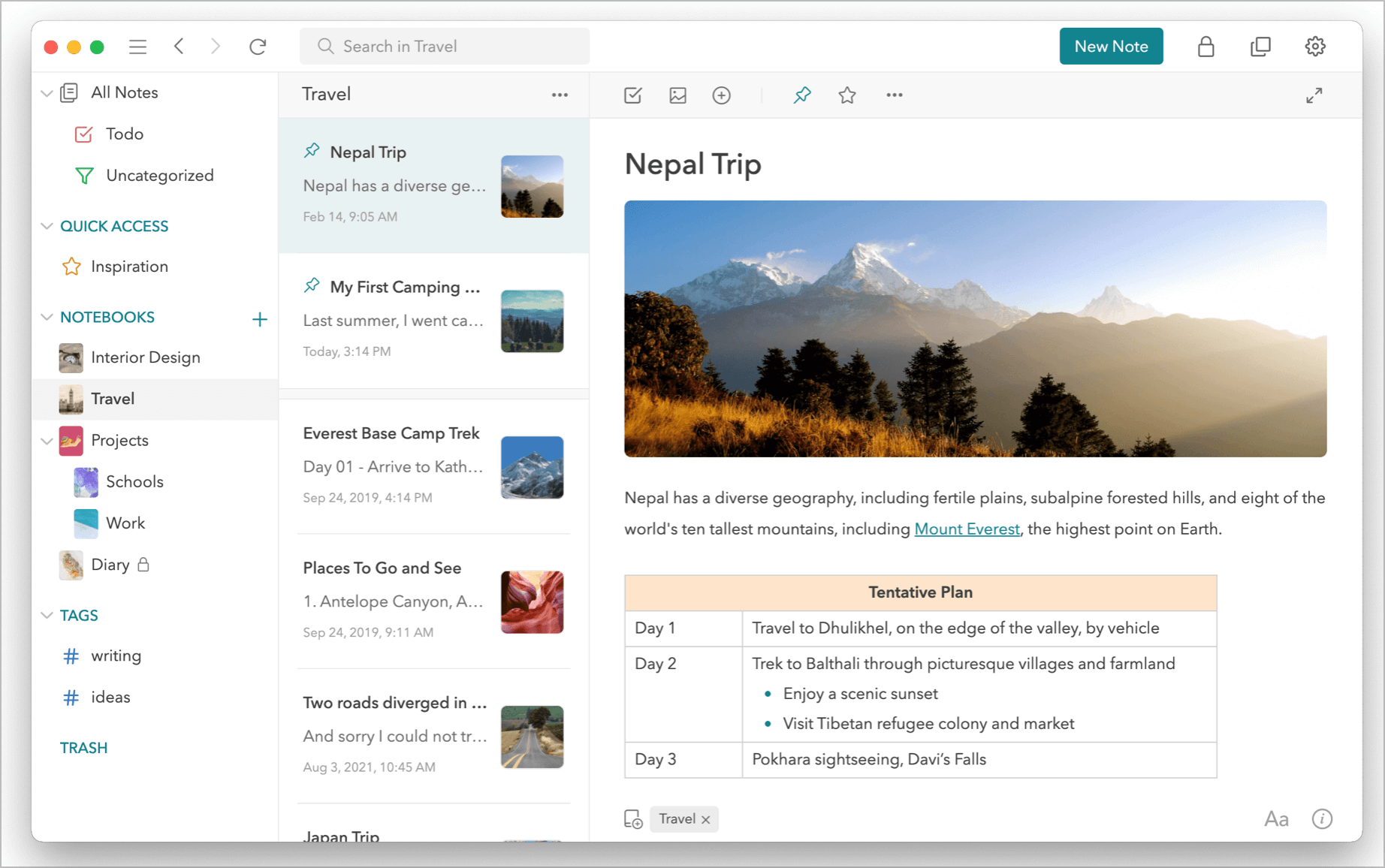
Using an app like MS Word or Google Docs can be great for writing papers such as the research paper you'll craft in this course. But ... they are not good tools for note taking: notably for taking notes across classes, across modules within a course, or for creating handy links between notes. There are a few solid note taking apps out there including Obsidian, Roam, and others. But UpNote has my vote based on its price, its cross functionality (works on Windows, Macs, iPhone, iPad, Android), its great features (backlinks, collapsible sections, planning capabilities, publish to website option and more). Below are a few links you might want to peruse ... but I'll explain more about UpNote when we meet as a live class. You can download for free and it will work fine for up to 50 notes. To access all its features, and to keep more than 50 notes, you'll need to purchase the full product.
- UpNote website
- UpNote Writing System Review
- Bi-directional links feature
- Table of contents feature
- Hide and Show Note Content with Collapsible Sections
Nine Steps

Sometimes the qualities and skills you need as a doctoral student go beyond basic academic skills and knowledge. We start exploring those
- Choice as a Talent
- The Power of Simplicity
- Make Connections
And there's six more steps that you'll learn about.